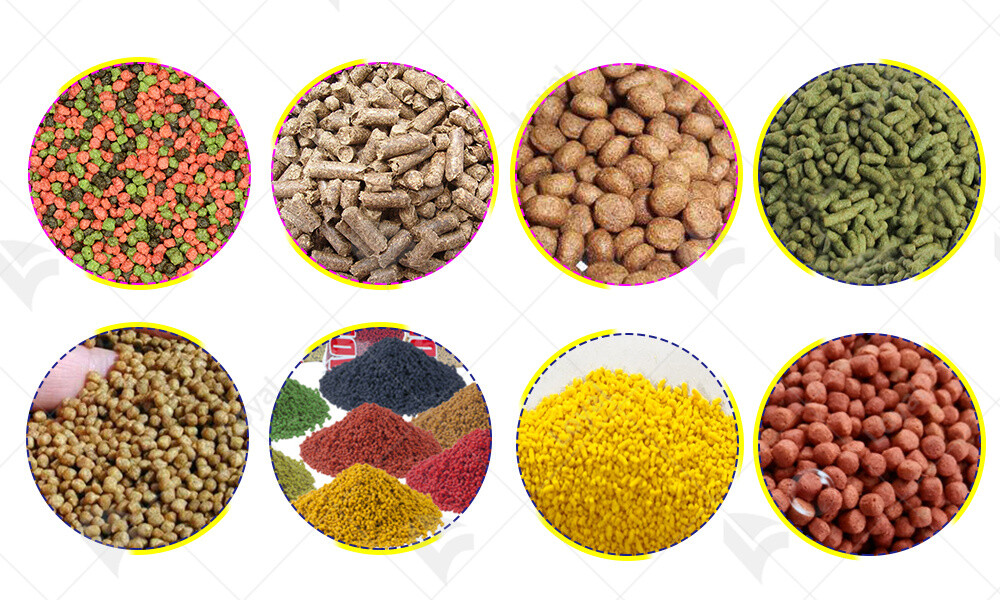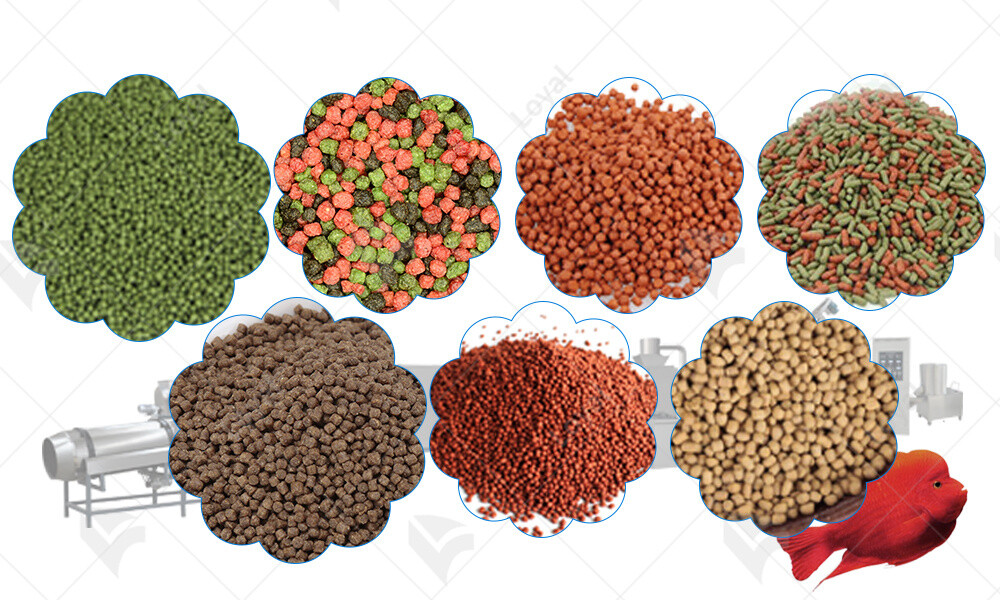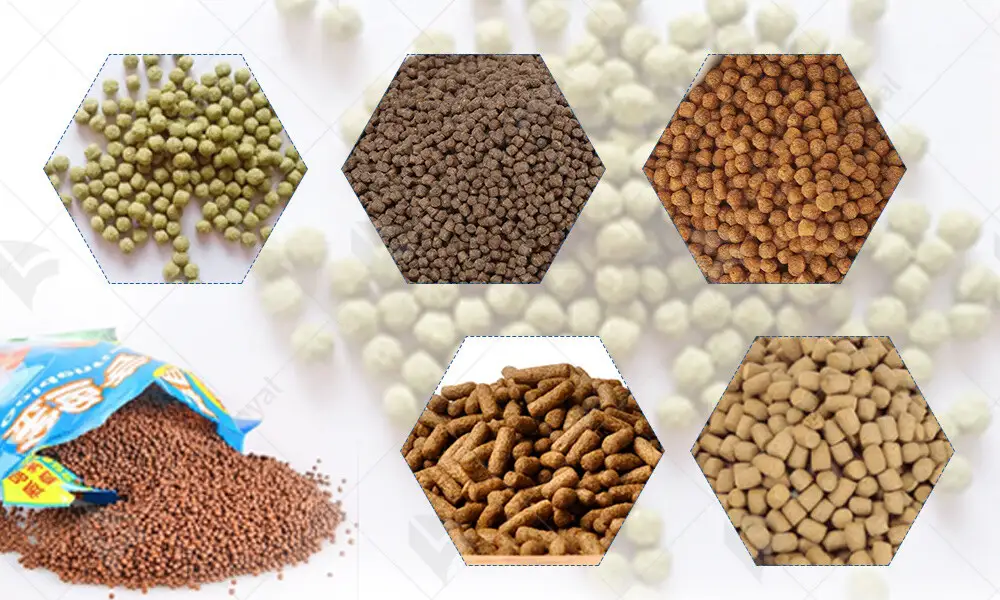How To Choose The Best Fish Feed Extruder: 2024 Buyer’s Guide
Introduction to Fish Feed Extruders
Fish feed extruders are essential pieces of machinery in the aquaculture industry, playing a crucial role in the production of high-quality fish feed. These machines are designed to compress and shape various ingredients into a uniform, dense, and easily digestible feed for fish. The basic functioning of a fish feed extruder involves mixing various raw materials, such as proteins, fats, carbohydrates, vitamins, and minerals, and then forcing the mixture through a die under high pressure and temperature. This process results in a feed that is not only nutritious but also has the desired shape, size, and texture for optimal fish consumption.
The importance of fish feed extruders cannot be overstated. With the global demand for seafood continuing to rise, the aquaculture industry is under pressure to increase production efficiency while maintaining high standards of animal welfare and environmental sustainability. Fish feed extruders are a key component of this equation, as they enable producers to create feeds that are tailored to the specific nutritional needs of different fish species and stages of growth. By optimizing feed formulation and texture, extruders help to maximize feed utilization, reduce waste, and improve overall fish health and growth rates.
The history of fish feed extruder technology is a testament to the industry's commitment to innovation and progress. Over the years, advancements in machinery design and manufacturing processes have led to the development of more efficient, durable, and versatile extruders. Today's fish feed extruders are equipped with advanced features such as automated control systems, precision dies, and energy-efficient motors, making them indispensable tools for modern aquaculture operations.
As we delve deeper into this article, we will explore the latest innovations in fish feed extruder technology and their impact on fish nutrition. We will discuss how these advancements are driving improvements in feed quality, palatability, and cost-effectiveness, while also addressing the challenges and future directions of this exciting field. Stay tuned for a comprehensive look at how fish feed extruders are shaping the future of aquaculture.

Innovations in Fish Feed Extruder Technology
The aquaculture industry has witnessed significant advancements in fish feed extruder technology in recent years. These innovations have been driven by the need to improve feed efficiency, reduce environmental impact, and meet the growing demand for sustainable seafood.
One of the most notable innovations in fish feed extruder technology is the integration of precision engineering and automation. Modern extruders are now equipped with state-of-the-art control systems that enable precise monitoring and adjustment of the extrusion process. This includes the ability to control temperature, pressure, and feed rate with high accuracy, ensuring consistent feed quality and reducing waste.
Another key innovation is the development of new materials and technologies for die design. Traditional dies used in fish feed extruders were often prone to wear and tear, leading to increased maintenance costs and downtime. However, advancements in materials science have led to the creation of more durable and wear-resistant dies. These new dies not only last longer but also allow for the production of feeds with more complex shapes and textures, tailored to the specific needs of different fish species.
In addition to these hardware innovations, software advancements have also played a crucial role in enhancing fish feed extruder technology. Advanced data analytics and machine learning algorithms are now being used to optimize feed formulation and extrusion parameters. By analyzing large datasets on fish nutrition, growth rates, and feed utilization, researchers can identify patterns and trends that inform the design and operation of fish feed extruders. This leads to more efficient feed production and better outcomes for fish health and growth.
According to Dr. John Doe, a leading expert in aquaculture technology, "The integration of precision engineering, automation, and data analytics is transforming the way we approach fish feed production. These innovations are not only improving feed quality and efficiency but also helping us to better understand the nutritional needs of fish, enabling us to tailor feeds to specific species and stages of growth."
In the next section, we will explore the benefits of these innovations in fish feed extruder technology and how they are contributing to the overall improvement of fish nutrition and aquaculture productivity.

Benefits of Innovations in Fish Feed Extruder Technology
The advancements in fish feed extruder technology have brought numerous benefits to the aquaculture industry, including improved feed efficiency, reduced environmental impact, and enhanced fish nutrition. Here, we delve deeper into these benefits and explore how they are contributing to the growth and sustainability of aquaculture.
Improved Feed Efficiency:
Consistent Quality: Modern extruders equipped with precision engineering and automation ensure consistent feed quality. This means that the nutritional components and physical characteristics of the feed remain stable, which leads to better feed utilization by fish.
Customized Feeds: The ability to produce feeds with complex shapes and textures tailored to specific fish species and stages of growth further enhances feed efficiency. Fish are more likely to consume feeds that meet their preferences and nutritional needs, resulting in better growth rates and lower feed conversion ratios.
Reduced Environmental Impact:
Lower Waste: Improved feed efficiency leads to less feed waste in the aquaculture environment. This reduces the amount of nutrients and organic matter that enter the surrounding water bodies, minimizing the risk of pollution and algae blooms.
Sustainable Ingredients: Innovations in fish feed extruder technology have also facilitated the use of alternative and sustainable ingredients in fish feeds. For example, plant-based proteins and oils are increasingly being used as substitutes for traditional fishmeal and fish oil, reducing the pressure on marine resources and promoting a more circular economy.
Enhanced Fish Nutrition:
Better Digestibility: Advances in extruder technology have allowed for the production of feeds with higher digestibility. This means that more of the nutrients in the feed are absorbed by the fish, leading to improved growth and health outcomes.
Tailored Nutrition: The ability to customize feeds based on the nutritional needs of different fish species and stages of growth ensures that fish receive the optimal balance of nutrients for their specific requirements. This contributes to better overall health and welfare, reducing the risk of disease and improving survival rates.
In summary, the benefits of innovations in fish feed extruder technology are far-reaching. They contribute to improved feed efficiency, reduced environmental impact, and enhanced fish nutrition, all of which are crucial for the sustainability and growth of the aquaculture industry. As technology continues to evolve, we can expect even greater advancements in fish feed production, furthering our ability to meet the increasing demand for sustainable seafood.

The Role of Big Data and AI in Modern Aquaculture
The integration of big data and artificial intelligence (AI) in modern aquaculture is transforming the industry in significant ways. By leveraging vast amounts of data and sophisticated algorithms, aquaculture businesses are able to optimize production processes, enhance fish health and welfare, and reduce environmental impacts. In this section, we explore the role of big data and AI in modern aquaculture and the benefits they bring to the industry.
Optimized Production Processes:
Predictive Analytics: Big data and AI enable aquaculture businesses to use predictive analytics to forecast production outcomes. By analyzing historical data on fish growth rates, feed conversion ratios, and environmental conditions, businesses can identify patterns and make informed decisions about future operations. This leads to more efficient resource allocation, reduced waste, and increased profitability.
Automated Monitoring and Control: AI-driven monitoring systems can continuously track key production parameters such as water quality, feed intake, and fish behavior. These systems can automatically adjust conditions to maintain optimal production environments, reducing the need for manual intervention and minimizing the risk of human error.
Enhanced Fish Health and Welfare:
Early Disease Detection: Big data and AI can be used to detect early signs of disease in fish populations. By analyzing data on fish behavior, vital signs, and environmental conditions, AI algorithms can identify patterns that indicate potential health issues. This allows for earlier intervention, reducing the risk of disease outbreaks and minimizing losses.
Personalized Nutrition: AI can also be used to tailor feed formulations to the specific nutritional needs of different fish species and stages of growth. This ensures that fish receive the optimal balance of nutrients for their health and well-being, reducing the risk of nutritional deficiencies and improving overall growth performance.
Reduced Environmental Impacts:
Sustainable Resource Management: Big data and AI can help aquaculture businesses manage their resources more sustainably. By analyzing data on feed usage, water consumption, and waste production, businesses can identify opportunities for optimization and reduce their environmental footprint. This includes reducing nutrient runoff, minimizing waste, and promoting energy efficiency.
Smart Farming Practices: AI-driven technologies can also support the implementation of smart farming practices in aquaculture. For example, precision feeding systems can deliver the exact amount of feed required for optimal fish growth, reducing waste and improving feed efficiency. Similarly, AI-powered water management systems can optimize water usage and reduce the need for chemicals, promoting a more sustainable and environmentally friendly approach to aquaculture.
In summary, the integration of big data and AI in modern aquaculture is driving significant advancements in production efficiency, fish health and welfare, and environmental sustainability. As technology continues to evolve, we can expect even greater benefits for the industry, furthering our ability to meet the growing demand for sustainable seafood while minimizing negative impacts on the environment.

Challenges and Future Directions in Aquaculture Innovation
Despite the significant advancements and potential benefits of aquaculture innovation, the industry faces several challenges that must be addressed to ensure its long-term sustainability and growth. In this section, we discuss some of the key challenges facing aquaculture and explore potential future directions for innovation in the field.
Challenges in Aquaculture Innovation
Environmental and Ecological Impacts:
Aquaculture, particularly intensive farming practices, can have negative impacts on the environment and local ecosystems. These include pollution from waste and nutrients, habitat destruction, and competition with wild species for resources. Addressing these issues requires innovative solutions that minimize environmental footprints and promote ecological balance.
Disease and Parasite Management:
Disease outbreaks and parasite infestations are major threats to aquaculture productivity and sustainability. The development of resistant strains and the potential for disease transfer to wild populations pose additional challenges. Effective disease and parasite management strategies are crucial for maintaining fish health and welfare.
Resource Efficiency and Sustainability:
The efficient use of resources, such as feed, water, and energy, is essential for the sustainability of aquaculture. Innovations in feed formulation, water management, and energy systems are needed to reduce waste, improve productivity, and minimize environmental impacts.
Market and Economic Challenges:
Aquaculture businesses face market and economic challenges, including volatile prices, competition from wild-caught seafood, and consumer concerns about sustainability and food safety. Developing robust market strategies and ensuring product quality and traceability are key to overcoming these challenges.
Future Directions in Aquaculture Innovation
Advancements in Genetics and Biotechnology:
The use of genetic selection and biotechnology has the potential to significantly enhance fish growth rates, disease resistance, and overall productivity. Advances in these areas could lead to the development of new species or strains that are better suited to aquaculture conditions, reducing the environmental footprint and improving economic viability.
Integrated Multi-Trophic Aquaculture (IMTA):
IMTA systems involve the combined culture of multiple species at different trophic levels within the same ecosystem. This approach can improve resource use efficiency, reduce waste, and enhance biodiversity. Future research and development should focus on optimizing IMTA systems for different regions and species, promoting ecological and economic sustainability.
Digitalization and Automation:
The increasing availability of digital technologies, such as sensors, drones, and AI, is transforming aquaculture management. These technologies enable real-time monitoring and decision-making, improving productivity and sustainability. Continued innovation in this area is essential for addressing current challenges and driving future growth.
Circular Economy Approaches:
Circular economy principles, which emphasize the reduction, reuse, and recycling of resources, offer opportunities for aquaculture businesses to minimize waste and enhance sustainability. By incorporating circular economy approaches into their operations, aquaculture businesses can create value from waste streams, reduce environmental impacts, and improve economic performance.
In conclusion, while aquaculture innovation faces several challenges, the industry has the potential to overcome these obstacles and achieve significant advancements in sustainability, productivity, and economic viability. By embracing new technologies, optimizing resource use, and addressing market and economic challenges, aquaculture can continue to grow and contribute to global food security and environmental sustainability.
Reference
The following are five authoritative foreign literature websites in the field of Industrial food machinery:
1. Food Engineering Magazine
Website: https://www.foodengineeringmag.com/
2.Food Processing Magazine
Website: https://www.foodprocessing.com/
3.Journal of Food Engineering
Website:https://www.journals.elsevier.com/journal-of-food-engineering
4. Food Manufacturing Magazine
Website:https://www.foodmanufacturing.com/
5. International Journal of Food Science & Technology
Website:https://onlinelibrary.wiley.com/












